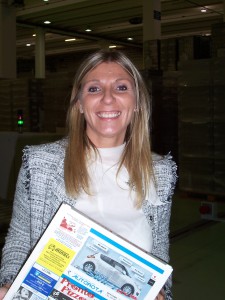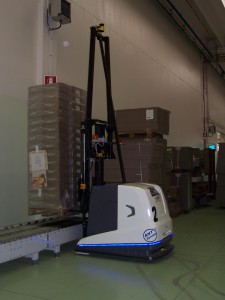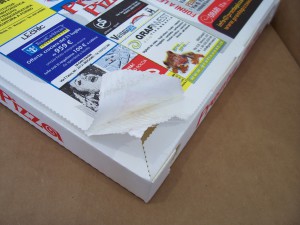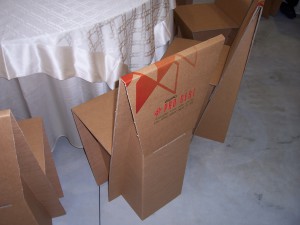When we talk about Italian excellence, it is fashion, design and food and wine that immediately spring to mind. A sacrosanct reasoning, except that it is also rather limiting. Made in Italy is also seen in other sectors. An example? Packaging! And it is precisely with all-Italian production and an international commercial vocation that Cuboxal – specialised in the production of cardboard packing production for foods – has become one of the points of pride of the Pro-Gest group. The Venetian holding company is one of the most important businesses in the Italian and European paper sector, in the recycling and production of paper, cardboard, packing and packaging, and Cuboxal is one of the 19 companies headed by it.

A renewed space
Founded in 1978 and purchased in 1992 by the Zago family – owner of the group – in 2012, Cuboxal moved to the Silea plant, in the province of Treviso. In the autumn of the following year, works began on the renewal of the structure according to an expansion and modernisation project of the spaces and production lines.
«The extension works had become necessary due to the need to bring all stages of production into a single structure» Benedetta Zago explains, General Manager of Cuboxal, during her trip to the company. «Up until late 2011, we worked in a plant that measured five thousand square metres and were forced to develop part of production in other group structures, because the production volumes were those they are today. With the restructuring works, on the other hand, we have been able to make everything more compact, transforming the plant in the structure dedicated to the complete development of containers for pizzas and other foods. Over a two-year period, we have completely overhauled things, also increasing production shifts, which at the same time have continued to function, going from two to three shifts from last July». In a surface area measuring 48 thousand square metres, of which 22 thousand covered, we now find five productionlines for a total capacity that can exceed 1.5 million boxes per day, employing 80 people, of whom fifteen or so work in the office. «There are not that many of us, but we form a dynamic structure comprising specialised staff».
Now, everything is managed in the Silea plant: from the arrival of the raw materials through to the packing and dispatch of the finished product. The paper comes from the paper mills of the Pro-Gest group that are located strategically across the territory of central and north Italy.
The choice of Cuboxal on the raw material to use is taken in respect of strict legislation on paper used in contact with foods. «If abroad, in general, the paper inside, which comes into contact with the food product, must always be in pure cellulose», explains Ms Zago, «in Italy, the legislation is even more severe and requires the use of three pure cellulose paper that can be white or with a dark inside».
Automated lines
The innovations have enabled the production process to be automated. «This has allowed us to make better use of the human resources we have available. Up until last year, for example, pallet forming was carried out by operators, but with the introduction of robots in the packaging and cellophane application phase of the goods, and in the positioning of loads ready for dispatch, staff have been trained and moved to managing new machinery. It now only takes three technicians to manage a whole process line. A choice that has successfully allowed us to increase productivity, whilst keeping jobs».
Specific LGV laser-guided shuttles are programmed to collect the raw materials from the warehouse and automatically supply the machines on the various lines. Cuboxal has two 5-colour printing machines, one that works with 3 colours and another two with 4.
After printing, the boxes are sent out to cutting, folding and, finally, packaging. Once packed into the transparent plastic film, the pallet is automatically expelled from the packaging line. An LGV shuttle identifies the pallet to be collected, picks it up and takes it to destination, positioning it in the pre-established point of the warehouse.

Information always available
Each pallet has a label with a barcode giving all the information necessary on the product and on the customer’s needs in terms of packing conformation. The new machinery has specific dies that enable the different forms to be created. This means that we can guarantee customised packing that is compatible with the computer system of the customer business, thereby facilitating warehouse management.
«The barcode gives all information, recorded on the computer, needed to allow for the pallet movement and the tracing of the productionline on which it was produced. In this way, each stage of production is completely traceable, from the raw material used – waste paper or pulp – to the cardboard used to form the box, and from this to the addressee customer».
Upon reading the code, therefore, the shuttles are set to prepare the material directly for loading or prepare it stored in the warehouse. The automation of the system also enables the shuttles to work by night entirely independently, meaning that the following morning, warehouse operators come in to find pallets ready for dispatch.
The loading and dispatch area is outside, covered by a huge suspended roof. «As from the morning, we load from 10 to 15 lorries and by early afternoon, the area, which is now empty, starts to be prepared for the next day’s load».
Coloured worldwide
Production in the Silea plant varies considerably «we create a great many different sizes and models, with a varied number of print types» continues the Director. This extensive assortment enables the Venetian company to meet the demands of a wide range of customers. More specifically, brightly coloured packaging is a frequent request from foreign markets. «We export approximately 90% of production; more specifically, approximately 75% of our products head out to European countries, whilst 15% end up overseas». The preponderant demand for export depends substantially from a different consumption habit with respect to the domestic demand. «Abroad, the trend is for the consumption of pizza and takeaway food to a greater extent than in Italy. A custom that is also reflected in the variety of formats requested, which, just to provide a few examples, go from 20×20 cm to 60×60 and even 100×35 cm. There are a great many different types and models, with two or three layers, with white or brown paper or matching both types».
In addition to cardboard for pizzas, Cuboxal also produces various containers for fast food, for fresh pasta and takeaway meals. More specifically, Ms Zago explains, this latter segment has increased significantly over the last two or three years, although the pizza box remains the company’s core business.
In general, however, the trend of the times is now moving towards increasingly designed and customised packaging, “there are some catering chains, particularly abroad, that focus on high quality food for which they require more sophisticated cardboard packing”. Finally, the trend of seeing pizza boxes used as advertising tools should also not be underestimated; “abroad, for example, some chains of restaurants or fast food outlets use the spaces of the box as a means by which to publicise their business, combined with the trademarks of other products; or – and which is increasingly being seen in Italy too – cardboard pizza boxes publicise the businesses in the area of the pizzerias”. The cardboard box thereby also takes on another function as an advertising vehicle, maximised by Cuboxal’s capacity to offer customised prints and details.

Not just pizza
The core business of Cuboxal is the pizza box, but not just that developed in the Silea plant. With a daily production of more than 1 million containers and a total capacity able to exceed 1.5 million boxes a day, the company owned by the Zago family develops various BRC (British Retail Consortium) certified products – Global standard for packaging and packaging materials, as well as PEFC and FSC certified on the origin of the raw materials. From the sixteen different pizza boxes to the ten different takeaway box models and the fruit and fresh pasta trays. These are flanked by the production of accessories of different materials, such as bags for pizza transport and spacers to prevent the pizza from coming into contact with the lid of the paper container.
Packaging in Italy
On the Italian market, the trend of cellulose packaging dated 2013 has proved to be better than that of the manufacturing activities, following a now historic trend.
This data is revealed by the analysis performed by the Istituto Italiano Imballaggio (the Italian packaging institute) and published on the “Imballaggio in cifre 2014” (2014 packaging in figures) report.
According to the institute, as compared with a decline of 2.5% seen in manufacturing, cellulose packaging has suffered a downturn of just 0.5% on last year.
The report explains that the result is due to the greater diffusion of the use of corrugated cardboard, particularly for the production of boxes and packing for transport – which accounts for more than 70% of cardboard packaging – increased particularly thanks to the growth of e-commerce. The corrugated cardboard packaging, in short, perform better than packaging in other materials.
Again according to the data of “Imballaggio in cifre”, considering, more generally, all types of packaging, not just pulp, Italian production accounts for 5.4% of world production and places Italy amongst the best packaging producers. In 2013, the sector also recorded an increase in turnover of 1.8% on 2012, for a total of approximately 29.3 billion euros. The packaging produced in Italy is exported worldwide, although the most important target markets remain the European Union Member States.
***
Life in the group
Cuboxal is a member of the major group Pro-Gest. Founded in 1973 in Triveneto by the Zago family, which still today holds its reins, the group consists of 19 companies spread throughout the territory of seven regions and deals with paper in all its forms. It is by no coincidence, in fact, that Pro-Gest is one of Italy’s most important businesses in the field and is specialised in paper recycling and in the production of paper, cardboard, packing and packaging.
The Pro-Gest group consists of the seven paper mills –Cagliari, Voghera, Tolentino, San Giuliano, Cartitalia, Carbonera and Villa Lagarina – the five companies producing corrugated cardboard –Ondulati Maranello, Ondulati Galmberti, Cartonstrong Italia, Plurionda and Ondulato Trevigiano – and the packaging companies –Unioncart, Bergapack, Trevikart and Cuboxal.

